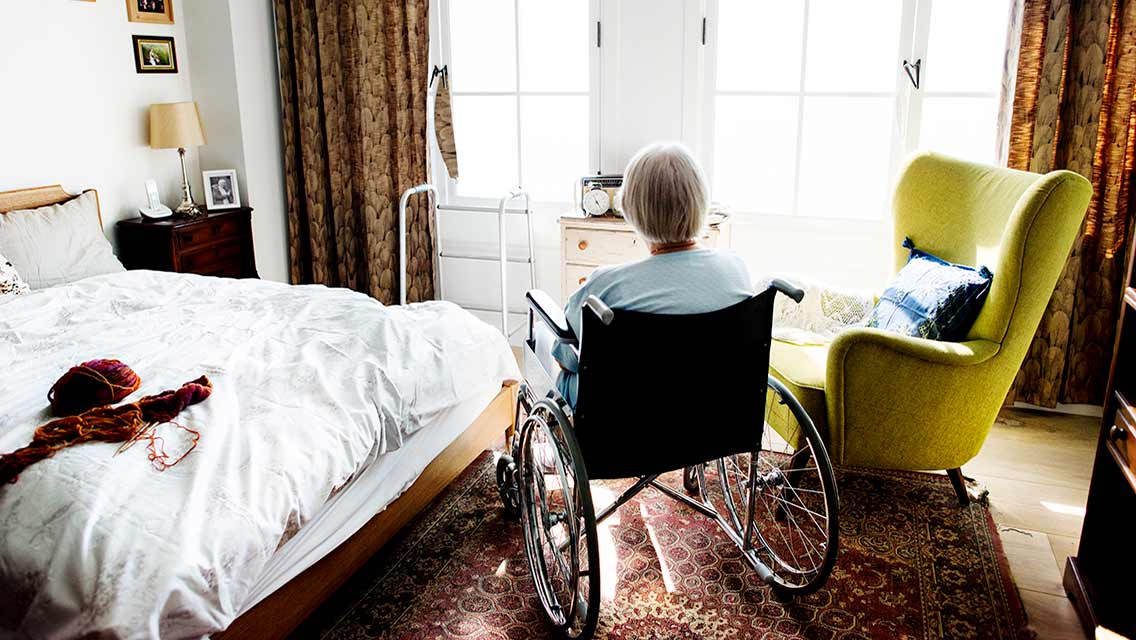It’s become something of a rite of passage for many elderly Americans: No longer able to handle the day-to-day personal-care and domestic challenges in their own homes, but not sufficiently debilitated to require 24/7 nursing care, millions of seniors in recent years have turned to assisted-living facilities. It’s a pricey option, with monthly rents averaging nearly $5,000, but once you’ve tapped out your nest egg, Medicaid promises to step in to cover your costs.
That’s how the system was working for about 17 percent of the 818,000 residents of U.S. assisted-living communities in 2020; it’s a reliable government program for low-income seniors with limited long-term care options. The pandemic and its aftermath, however, have shifted the landscape in recent months, putting these Medicaid beneficiaries in jeopardy. As Christopher Rowland reports in the Washington Post, facilities have been evicting these seniors at a disturbing rate.
In Wisconsin alone, Rowland notes, at least 50 Medicaid beneficiaries have been evicted since last fall. It’s a nationwide trend that began in 2020, a year in which long-term-care advocates documented more than 3,000 eviction-related complaints at U.S. facilities. “It’s a good illustration of how Medicaid assisted-living public policy is still in its Wild West phase, with providers doing what they choose in many cases, even though it’s unfair to consumers,” Eric Carlson, an attorney and director at the nonprofit Justice in Aging, tells the Post. “You can’t just flip in and out of these relationships and treat the people as incidental damage.”
Unlike its oversight role in the nursing-home industry, the federal government doesn’t regulate assisted-living facilities, many of which are chafing at what they view as inadequate Medicaid reimbursements (which may be as low as $3,000 per month in some states) at a time when inflation is driving up costs, staff shortages are putting pressure on wages, interest rates are climbing, and occupancy levels have not returned to prepandemic levels.
Facilities have delayed canceling Medicaid contracts as long as they can, while “hoping the reimbursement will be increased to help them afford inflation factors,” says Paul Williams, vice president of governmental relations at the trade group Argentum. “Hope was diminished in some states of that happening, and they’re saying, ‘I cannot do this anymore.’”
As challenging as that may be for an industry anxious to sustain operating margins that ranged from 28 to 38 percent in 2019, it’s the evicted residents who are feeling most of the pain.
Rowland points to the case of Elizabeth Burnette, 80, whose assisted living facility, Cedarhurst at Madison, recently canceled its Medicaid managed-care contracts. Burnette was among 28 residents who were told during a group meeting last fall that they would be evicted.
“Residents were in tears to hear they had to find another place to live,” Burnette recalls. “Most of us are incapacitated in some way, with walkers and in wheelchairs or mobile beds.”
Christie Schrader, a spokeswoman at Cedarhurst, which had assumed management responsibilities of the facility (owned by a Boston-based real estate investment trust) in November 2021, called the move a “tough decision” brought on by inheriting Medicaid-funded residents who required a level of care the company does not offer. “We believed it was in the residents’ best interest to aid them in finding alternative placement which could care for them in the way they deserve.”
Whatever the reasons for the evictions, assisted-living companies are violating no laws or government regulations when they show residents the door. As Rowland notes, many of these facilities house a limited number of Medicaid-eligible beds and, regardless of occupancy levels, management can opt out of Medicaid contracts at any time without consequences. These caveats may or may not be buried in the fine print of the contract residents sign — often under stressful circumstances.
“This is how people are getting screwed, by promises that the place will take [Wisconsin Medicaid] if they stay for two years,” explains Carol Wessels, an elder-law attorney in Mequon, Wis. “Then they either sell to another company or change their minds and opt out of the program entirely, which you really can’t stop them from doing. At that point, the family has used up their funds.”
That’s what happened to Shirley Holtz, who at 91 was evicted earlier this year from Emerald Bay Retirement Community near Green Bay, Wis., after paying her own way for 26 months and spending an additional two years at the facility with Medicaid footing the bill. When management terminated its contract with the state’s Medicaid program, Holtz couldn’t afford to pay full price.
Her family was lucky to find a facility that would accept a Medicaid-funded resident, but the move was hard on Holtz, who suffered from dementia and may have fallen victim to what geriatricians have dubbed “transfer trauma.” She lost 15 pounds and stopped using her walker. Three weeks later, she died.
You can blame that on an industry’s relentless focus on its bottom line, or you can criticize the government’s inability to adequately protect these vulnerable seniors. For Holtz’s daughter, Ann Marra, the cause matters less than the effect: “It’s cruel, heartless, and sad.”





This Post Has One Comment
This is heartbreaking.